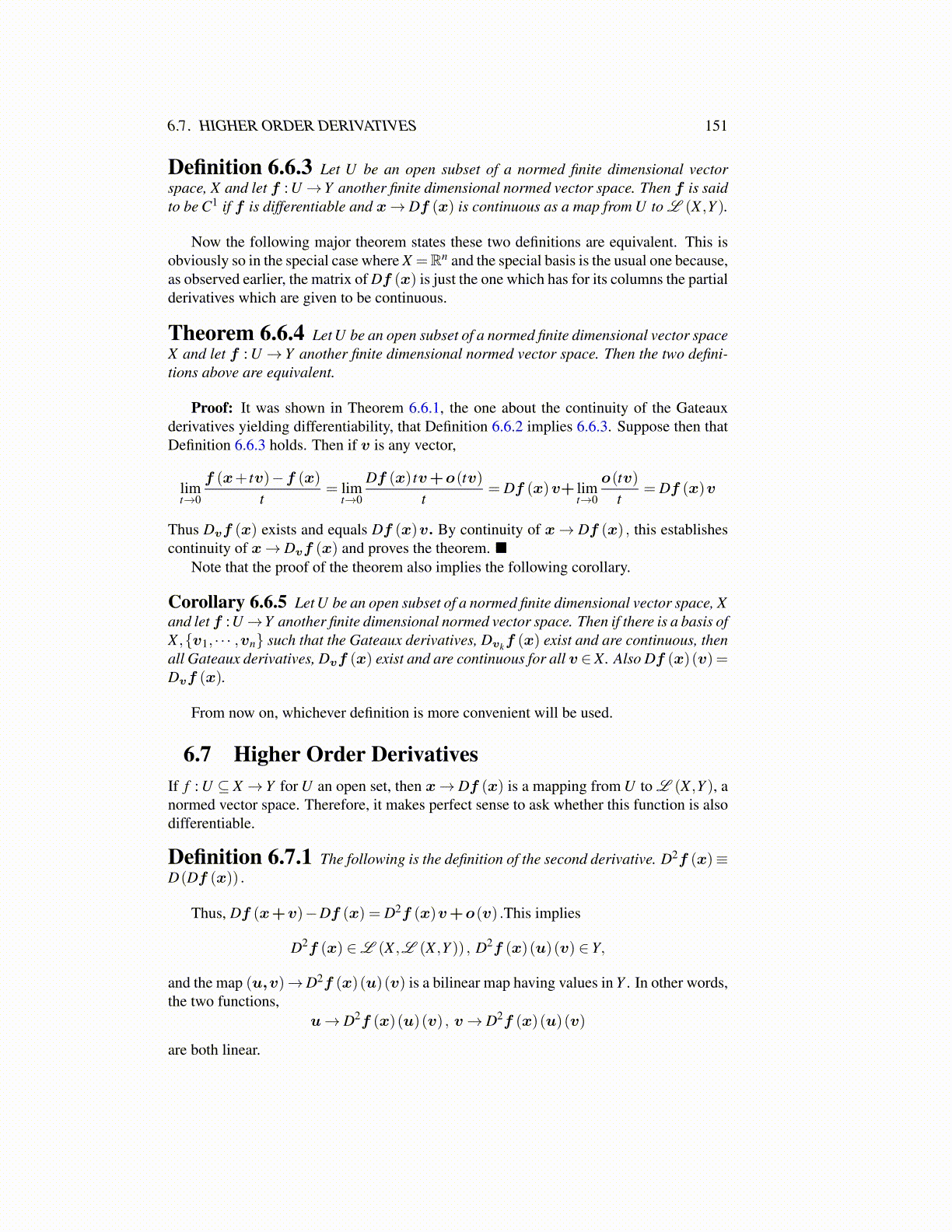
6.7. HIGHER ORDER DERIVATIVES 151
Definition 6.6.3 Let U be an open subset of a normed finite dimensional vectorspace, X and let f : U→Y another finite dimensional normed vector space. Then f is saidto be C1 if f is differentiable and x→Df (x) is continuous as a map from U to L (X ,Y ).
Now the following major theorem states these two definitions are equivalent. This isobviously so in the special case where X =Rn and the special basis is the usual one because,as observed earlier, the matrix of Df (x) is just the one which has for its columns the partialderivatives which are given to be continuous.
Theorem 6.6.4 Let U be an open subset of a normed finite dimensional vector spaceX and let f : U → Y another finite dimensional normed vector space. Then the two defini-tions above are equivalent.
Proof: It was shown in Theorem 6.6.1, the one about the continuity of the Gateauxderivatives yielding differentiability, that Definition 6.6.2 implies 6.6.3. Suppose then thatDefinition 6.6.3 holds. Then if v is any vector,
limt→0
f (x+ tv)−f (x)
t= lim
t→0
Df (x) tv+o(tv)t
= Df (x)v+ limt→0
o(tv)t
= Df (x)v
Thus Dvf (x) exists and equals Df (x)v. By continuity of x→ Df (x) , this establishescontinuity of x→ Dvf (x) and proves the theorem. ■
Note that the proof of the theorem also implies the following corollary.
Corollary 6.6.5 Let U be an open subset of a normed finite dimensional vector space, Xand let f :U→Y another finite dimensional normed vector space. Then if there is a basis ofX ,{v1, · · · ,vn} such that the Gateaux derivatives, Dvkf (x) exist and are continuous, thenall Gateaux derivatives, Dvf (x) exist and are continuous for all v ∈X. Also Df (x)(v) =Dvf (x).
From now on, whichever definition is more convenient will be used.
6.7 Higher Order DerivativesIf f : U ⊆ X → Y for U an open set, then x→ Df (x) is a mapping from U to L (X ,Y ), anormed vector space. Therefore, it makes perfect sense to ask whether this function is alsodifferentiable.
Definition 6.7.1 The following is the definition of the second derivative. D2f (x)≡D(Df (x)) .
Thus, Df (x+v)−Df (x) = D2f (x)v+o(v) .This implies
D2f (x) ∈L (X ,L (X ,Y )) , D2f (x)(u)(v) ∈ Y,
and the map (u,v)→D2f (x)(u)(v) is a bilinear map having values in Y . In other words,the two functions,
u→ D2f (x)(u)(v) , v→ D2f (x)(u)(v)
are both linear.